Patient Stories
What Life is like with Hemi-Hypertrophy – Trish Ward
“This is Trish’s lived experience of living with PROS and as we are all affected differently each persons’ journey is unique to them.”
I have Hemi-Hypertrophy with Multiple Lipomatosis (HHML), which is specifically one of several rare overgrowth conditions caused by a genetic mutation called PIK3Ca, or PROS. What that means for me is that I have always had one leg bigger than the other-and in that leg, I have had multiple tumors that impeded my mobility and required surgery. NO ONE is currently studying this. No one. I’ve checked throughout the last two decades. The closest I can find is a study in Scotland going on right now looking at manipulation of the pathways of the affected gene. I’ve always had to do my own research and look for new information on my own initiative. I stumbled across the medical trial I joined purely by coincidence! No one follows me. No one ever has. There are no specialists, nor any special type of physician that can legitimately claim to “treat” this.
This is the year of the Dragon (2024) and according to the Chinese, I have come full circle in my life. The last time there was a year of the Wood Dragon was 1964, when I was born. Turning 60 is a momentous thing in the Chinese culture. I do hope my experiences are beneficial to anyone trying to picture what life into adulthood may look like for someone with this condition, but I caution that I will be honest, (and probably subjective, despite my efforts to remain neutral). I certainly wish I would have had access to someone who has lived with this when I was growing up. There were many, many unanswered questions throughout my life about my “condition”, (there still is) and no one to ask. I was in my 40’s the first time I ever connected with another human being with this disorder.
I was 3 when I had my first surgery to debulk my big toe on my right foot. By the time I was 18 I had had around thirteen surgeries to remove lipomatous tumors and bone spurs in my toe, foot, ankle and calf. Between the ages of 30 and 50 I had another half dozen surgeries reconstructing my foot- including amputating my big toe and fusing the joint with pins in the center of my foot to restrict movement. When I turned 50, I started to notice my thigh was growing and over the next decade it continued to increase in size, (likely triggered by menopause). My spine eventually became effected, leading to degenerative disc disorder, scoliosis and arthritis of the low back. My entire life, I’ve sought surgical options as well as research opportunities for anything related to my disorder. I have utilized every noninvasive technique for pain relief: Massage, chiropractic, acupuncture, acupressure, tens units, topical and edible medicines, physical therapy, diet and exercise- everything I can think of -and all at my own out-of-pocket expense, because insurance doesn’t cover wholistic medicine or PT long term.
After much debate and speculation in my youth, I was finally diagnosed with “Hemihypertrophy” when I was in my 30’s. Not a condition you can test for, (like Diabetes), and really just a broad description used medically for a myriad of overgrowth conditions present at birth that they know nothing about. “Isolated Hemihypertrophy”, I’ve come to learn, means they can’t connect it to a genetic disorder. This doesn’t mean it isn’t caused by gene mutation, just that the test was negative for the “known” genetic conditions. Research had started looking into this as a genetic mutation over 20 years ago. By the early 2000’s they could test tissue for the specific gene responsible-which had been discovered through cancer research. That’s when I had a tissue sample tested through the NIH and received my diagnosis.
Much of my early life I was misdiagnosed, (Whatever it was assumed to be before- that doesn’t really matter now). Now, the known PIK3Ca disorders can be found if you Google it. CLOVES Syndrome, KTS, MCAP or (M-CM), and CLAPO Syndrome are just a few. When geneticists run test, these are some of the syndromes they are looking for. I was always treated by medical professionals as a rare and isolated case. Despite multiple surgeries during childhood/adolescence for tumor and bone overgrowth removal, I adjusted physically and required little accommodation. My childhood was normal and very physically active. I never felt limited or handicapped, unless I was recovering from a surgical procedure. I healed quickly. I bounced back every time like a trouper.
I’d like ALL you parents to know that there’s a lot of physical and emotional trauma that comes from being a child going through surgeries that you can’t see on the outside. Kids instinctually want to please adults. They fake feeling ok a lot because they don’t want to be the cause of their parent’s sadness and worry. At the time, I was commended for my “bravery” (like I had a choice)…when often, I felt like a strange ameba on a slide, being dissected. The result de-humanized me somewhat. At the same time, it gave me positive attention by eliciting sympathy from strangers, (not a healthy way to learn to seek attention). It was confusing and very difficult to process fully. I can only begin to discuss the psychological ramifications of having this. It gets complicated, especially when considering the self-esteem issues we go through by having a recognizably, different sized limb.
With this particular condition, (as I have learned through experience and talking to others with it), parents are almost always told that it’s a pediatric condition. That once the child stops growing, everything will be ok after that. Pediatricians have heard of this, but never see it. They think they know enough to tell you that specialists will likely have to get involved early on and growth monitored very closely. Some will recommend orthopedic surgical intervention as a viable option in adolescence if the limb length discrepancy is too pronounced- but overall nothing too alarming or concerning…Just regular monitoring, maybe orthotics or specialized shoes… and then that’s it…No prognosis. No treatment options. They will speak in absolutes when discussing protocol for monitoring things like blood tests, ultrasounds, MRIs, etc., (misleading you into thinking they know what they are looking for) even then it’s often inconsistent from “specialist” to “specialist” what tests will be deemed necessary, how often or what numbers and measurements are the criteria for which specific disorder… Most will say they’ve never seen any patients with this before, but very few will admit that they are in fact clueless. They all act like they know enough to send you to another “specialist”, but none will admit that no one specializes in “it”. You’ll undoubtedly see a geneticist, who will explain on a molecular level what went wrong with the growth gene responsible for your condition, but they won’t refer you to anyone who “treats” it. You’ll be told to see an orthopedic surgeon if the leg/arm discrepancy is beyond normal. Methods to “stunt” bone growth and even amputation are considered as reasonable, viable options, should the growth become concerning. This is how medical professionals have “handled” us old timers and are continuing to “handle” new diagnoses today. All of us that I’ve met were told this. All of us have continued to have problems in adulthood. All of us have been left hanging and fending for ourselves by the medical community. To say they are disinterested is an understatement. I have been subjected to horrific medical care over the years, and so have others with this disorder.
Just trust me when I say any/all surgery is traumatizing to a child/young person. If you haven’t experienced it, you cannot relate. Imagine, you are too young to really understand everything that’s happening to your body. Surgery is very painful, even with drugs. Recovery is also painful. There’s no control over your own body, people are rough, callus or indifferent to you when you are at your most vulnerable. You do not feel human. You feel like a slab of meat that is being cut into, I am not exaggerating. Every time it happened to me, part of my humanity was cut away as well. Scars and nerve damage are mild repercussions compared to the psychological terror of having no control over your own body. I have full on panic attacks before surgery now. It’s gotten to that point. I have to be fully sedated just to have an MRI. My terror associated with medical procedures is irrational, I’m completely aware of it, but there’s nothing I can do anymore to stop it. After all these years and close to 20 surgeries, you’d think it would be a piece of cake for me. The reality is it gets worse every time. The stress, the anxiety, the anticipation of pain to come… it only gets harder. It’s not just the surgery either. It’s the frustration of dealing with a medical community that honestly doesn’t care, and the insurance industry that only wants to make a profit. The following is my most recent encounter with the medical profession. This is a classic example of the kind of experience you can expect if you’re dealing with this disorder as an adult.
Today was my 3rd time seeing Dr. J, a surgical oncologist whose sensitivity and tactfulness impressed me the first visit when he put his hand around my shoulder as I was exiting his exam room and stated, “I’m so sorry this is happening to you”. That was the first time in over 50 years of dealing with doctors when any professional said anything remotely kind to me. I thought, it must be because he’s an oncologist. They deal with cancer patients, so they probably have a better bedside manner than the orthopedic doctors I’ve dealt with in the past. He said he thought it would be an easy procedure, the mass seemed solid enough to remove in one scoop, outpatient procedure, easy-peasy. No long recovery, back to normal in no time.
Before I could follow up with the surgery two things happened: One was COVID, followed by an opportunity to join a research study for Vijoice/ Alpelisib. I was extremely optimistic that the drug was available, (and all expenses covered) and thrilled that I was one of only a few adult participants allowed into the study. I had retired from teaching early and lost my great health insurance, so this was a dream come true for me. It was the most comprehensive diagnostic experience I had ever been through. All the services were coordinated for me, streamlined for patient ease. Everyone I dealt with was attentive, compassionate and extremely thorough. I wish all my medical encounters could be so impressive! Unfortunately, the Alpelisib trial did not shrink the lipoma tumors in my foot, ankle, calf or thigh. I took it for a year, and for me the side effects were really bad; extreme diarrhea, weight loss, severe fatigue and hair loss. I honestly feel, it would have been worth it all if only the drug shrunk my tumors, but it didn’t. I also had to let my GP go at this time because he was so detached and incompetent in coordinating any testing or communication with the research team. It was awful. He made no effort to educate himself about my condition over the entire 5 years I was his patient, even though I gave him literature and tried to discuss it with him…
Back to Dr. J on my second visit, six years later. I decided to travel the 2 hour drive each way back to Dr. J because finding a surgeon that I trusted was hard and he had sounded so optimistic. Even though I had moved, my best friend lived close to the hospital and I knew I could stay at her place for the surgery and follow up visits. So, I went back for a second consultation in the spring of this year. He said he recalled my case, (but I wasn’t convinced that was true). He seemed to know nothing about Hemi, or my genetic condition, so I shared with him all about my trial with the medication and told him I had had 3 separate, full-body MRI images at the hospital for the research in 2022-2023. The last image was in the fall of 2023 and now It was the spring of 2024. Dr. J said he had to have an MRI less than a year old in order to proceed. Despite my study images being less than a year old, he gave me a prescription for a new MRI. I explained I would need sedation and that my last few MRIs were very problematic, he still insisted I get a new one…
Ok, so I had him send an MRI order to the hospital near me. I was annoyed and suspected this was going to cost me out of pocket, but I had waited 6 years to meet with this guy again and was anxious to get some resolution for my increasing back pain… I wait 3 weeks for radiology to call me for an appointment. They scheduled it for the following month. 3 more weeks later, I go to my appointment and they tell me they don’t do sedated MRI’s at that facility. Apparently, Dr. J forgot to mention in writing on the order that I required sedation…Appointment cancelled. I contact Dr. J’s office. They mail me a new prescription which I hand deliver to the hospital radiology department this time. Another month goes by before they call me to schedule, and I get an appointment for the following month. It’s now July. I arrive for my sedated MRI only to be delayed by 6 hours because another patient with my exact same name and a birthdate one month off from mine, is overriding their computer information system. She has a mechanical apparatus implanted in her spine. They can’t proceed with the imaging until it’s proven I’m not her. They can’t bring up my records. MRI refuses to do the imaging until I have an X-Ray to prove I don’t have the apparatus in my spine. It was a circus. I had the X-ray, I finally got that straightened out, I got sedated and had the MRI. In mid-August I get a notification of new test result available in my online medical chart. The MRI results were in and, although I can’t access the images, I read the report that says the mass is more or less unchanged as the prior reports had stated…
Meanwhile, I had requested my medical research records from the Alpelisib trial, including the full-body MRI images for comparison. I made the 4 hour trip to Dr. J’s office and hand delivered the 2 DVDs, one with all the written reports and one with the 3 comparative MRI images that I was sent. I waited for over an hour for someone, (an intern?) in his office to bring up the MRI of my thigh on their computer so I could screen shot it with my phone. They thought I was nuts, but I hadn’t thought to do it when the researchers were showing it to me on their laptops. Patients are rarely given copies of MRI images because you have to have the software to read the discs. Subsequently, I have no pictures from all these MRI’s I’ve had. Not one. Only copies of written medical reports.
Two weeks later, Dr. J’s office calls me. They want me to come in for a pre-op consult. I specifically asked if they had received the images from my recent MRI, and had Dr. J looked over the additional 22/23 MRIs from the study? They couldn’t confirm if he personally had seen them, but the recent MRI was absolutely there they said. We set up the appointment for September 11. Since my husband and I share a car, I decided to rent a car, drive over the day before and spend the night at my friend’s house. A 4 hour drive for me is difficult, especially since I’m already in a state of high anxiety because I’m anticipating medical discussions that typically have no good answers. People really have no idea how anxiety producing these encounters are for me, not even my husband.
I have now spent $200 on a rental car and been set up on a payment plan to pay off my copay for this recent MRI (over the course of 18 months at a cost to me of $2,775- the insurance covered $5,000). If I don’t have the surgery this year, my insurance re-sets for the new year and I have to start over with my deductible. This is a huge financial burden on my husband and I, as we are both retired.
On September 10th I’m driving my rental to my friend’s house to spend the night. Dr. J’s office calls. “Hey,” they ask, “By any chance are you bringing that recent MRI disc with you to tomorrow’s appointment?” I truly want to stab myself in the eyes and blindly drive off the road… “You never asked me to do that, in fact I made sure I had confirmation when I made this appointment that you guys had it.” I gritted between my teeth.
“Well, apparently we only have the written report. But you could just run over to the hospital and get a disc before your appointment tomorrow, couldn’t you?” She quipped.
“Uh, No. I’m already on my way.” I tell her.
“Oh, well I don’t know what he’ll be able to tell you at the appointment, or if he’ll be able to schedule surgery without it” she informs me. I’m furious because this kind of lack of attention to details is what I’ve come to expect from the medical community. This kind of ludicrous crap happens. Every. Time.!!! Why would a surgeon order an MRI and not want to see the images? Why would they require a separate request for the images??? Since when is it the patient’s responsibility to transport medical records from one place to another? It’s illogical! When I arrive at my friend’s, I call the hospital that performed the MRI. I speak to their patient relations person. She empathizes and sends me to records where they are very sorry to have to tell me that the next-day mail has just left. The woman assures me she’s burning the DVD as we speak and they will fedEx it asap. The doctor won’t have it in time for my appointment, but it will get to him within 24 hours.
I woke up the morning of my 3rd appointment with Dr. J expecting a non-informative consultation. At best, Dr. J will have looked over the older MRI’s (which remember now are just barely over one year old), maybe done some reading about PIK3Ca, as to be better prepared for our meeting. Maybe gained access to recent research about it, familiarized himself about it. At worst, we can schedule the surgery and he can give me a timeline for the surgery and recovery. I wish I could say I felt as confident in his capabilities as the first time we met, but I can’t.
I arrive early and they take me in about 5 min. before my appointment time. The intern who showed me the MRI images on the computer when I was there last enters my exam room with a resident. I smile and great him warmly, “Hi! I remember you. You showed me my MRI images last month.” No response. No acknowledgement. I’m a specimen on an examination table now, not a human being.
“Yeah, so we still haven’t received those images we needed, oh- unless you happen to have it in your bag there, do you?” He indicates to my tote bag.
“No, I wasn’t told I would need to bring it -until yesterday when I was driving here. I spoke to the hospital yesterday and they are fedExing it to you later today”. He and the resident leave the room. Minutes go by. Whispering outside my door intermittently. Quiet. Then more whispers. Finally Dr. J comes in with about 5 different residents in tow, but not the intern.
“Hey There! How’s that thigh doin?” he asks me.
“Still growing” I reply. We briefly discuss the issue at hand, (no recent MRI to refer to so surgical consult is limited). I brought up again-the 3 comparative Full Body MRI’s I had made available to him. Saying surely having the full body images was helpful? I’m wondering if he can see a visible difference in the tumor over the course of the year-long study. The whole time we were measuring for a decrease in response to the medication, not an increase. It never even occurred to me to ask until after the study ended, if the increased growth of the tumor had actually been visually recorded. My suspicion is that Dr. J never even looked at the disc. He disregarded it just as the intern had, “We really prefer to have something recent,” he told me. He mentions rapid growing cells always being a concern for cancer, we should do a biopsy, yada, yada. His residents knowingly nod. I mention that increased risk of cancer is one of the concerns common with my overgrowth disorder, but so far I’ve only had lipomatous tumors, not malignant. He agrees, (like he knows). He tells me he can remove the tumor, but the difficulty lies in normal fat cells being so similar to the lipoma fatty tumor cells, bla, bla, bla. The explanation was clearly for the residents and not me. Then he tells me we can go ahead and set up a surgery date today. I should expect a 6 week recovery and will likely have a drainage tube that will remain after surgery. My incision will be pretty big and on the outside of my thigh, (where it will be most visible). Despite the fact that my cantaloupe sized tumor that sits just under my butt cheek will be removed, there will likely be no noticeable size difference in my thigh post op. I will have to spend the night in the hospital after surgery, FOR PAIN MANAGEMENT…
I was stunned. This wasn’t what he had said 6 years ago. He must have sensed my trepidation because Dr. J then told me I could do nothing instead, if I chose. I said I wanted the surgery regardless and he said ok. He dismissed me by saying, “I’m sorry this is happening to you”…
Wait! What? I realized what an idiot I had been to think that there was any empathy with this doctor. He didn’t really understand my condition any more than any of them ever do. He says that to all his patients. He says it every time. This guy has made no effort to educate himself about my condition, and had no intention to. None of them ever do. Either they are so arrogant as to think they don’t need to be educated, or they just don’t care or want to learn.
This is the reality of life with hemihypertrophy. I’ve had doctors (top neurologist) tell me this was psychosomatic, others have suggested I amputate my entire foot. Either extreme is ridiculous, but the middle ground is a mine field of misinformation and disinterest by the medical community. This is just one of many, many disappointing encounters I have had with doctors in my adulthood. I have had my hopes up many times only to be let down time and again. I never elected to have a leg shortening procedure, (called an epiphysiodesis), and remember doctors discussing it for me with my parents. I always thought it sounded barbaric, and I suspect so did my parents. They didn’t do it, maybe the measurement didn’t warrant it, I don’t remember. As an adult my LLD changes all the time, depending on my spinal alignment. I’ve seen a chiropractor most of my adult life and it has made all the difference. I’d heard the surgery was life changing for some hemi patients and they had no regrets ever, but for others it was a nightmare. Screws come out, procedures fail to hold up, other complications arise. The procedure has remained unchanged for 50 years! Even those who felt it was a success admit that early arthritis is still a big problem… and yet that is what the procedure is supposed to prevent. That’s the reason doctors tell parents their child needs the surgery-to prevent spinal problems in the future. I feel very conflicted about this and wish it would be addressed by the orthopedic community-but it’s not.
I guess the impression I most want to make is that this is NOT simply a childhood disorder that improves with age or goes away. Yes, most of the overgrowth does happen during childhood, but the repercussions of being an adult with this is simply not studied or known, let alone treated. Now is the time to collect data and do research so that future kids might avoid a lifetime of pain and disfigurement, if it’s at all possible. Despite the fact that this is supposed to be a super rare disorder, I see parents of new babies who are being diagnosed with this every other day on Facebook. Occasionally, some new adult posts that they just found the group, had been given the diagnosis in their youth and had no clue as young adults what to do next. There are 5 different hemi groups I follow and I’m very, very active in seeking and sharing information. I’m ready, willing and able to contribute knowledge and always have been. I’m considerate of student doctors, deliberately choosing teaching university hospitals for my surgeries in the hopes that someone might connect with people studying this, or take enough of an interest to want to study it themselves… That never happens. I am a born special educator. I’m seeing a trend. In 2008 when I started teaching in the field of autism, the incidence rate was 1 in 88 births. Now it is 1 in 54 births. Not saying this is a fair comparison, (certainly not a leap a geneticist would ever make), but logically: the population increasing and diagnostic tools getting better at identifying specific disorders does certainly make an increase in Hemi cases plausible. Maybe not so rare after all, just understudied and unknown as of yet… This could be a legitimate problem in the future and people are going to want treatment options.
I’ve learned through my research trial last year that this disorder has been shown to respond to chemotherapy in very young children. There may be only a small window during the growth period that medicine could intervene and correct this genetic flaw. I read on the Alpelisib FB page about people, toddlers, who are on it right now and seeing benefits. Some adults with vascular involvement are seeing an improvement but long-term efficacy is still unknown. What I don’t understand is why limb shortening surgery is even still an option??? Why would anyone choose surgery for their child when a chemical could correct the genetic flaw and change a child’s growth development? I’ve been criticized on Facebook by new parents who only want to hear positive outcomes for their children. Their doctors have sold them on the wisdom of epiphysiodesis and make it sound like it’s a reasonable, even necessary procedure. It is not. It is very painful, not to mention unnatural and traumatizing to the body. There is also some speculation that once the tissue is surgically altered, the medicine can’t reprogram the cells to self-correct. I’ve been very vocal on FB about this, because I don’t think parents are being given accurate medical advice about the newer research and the medication trials going on. Every one of them are overwhelmed and looking for answers that don’t exist yet. They want reassurance and these doctors give it. They give it even though they have no right to. No one does.
Here’s what I can tell you about life with Hemi-Hypertrophy: There’s no good surgical option for this disorder. None. Every surgery I have had was necessary for mobility and pain management, but also created new, unforeseen problems. For example, amputating my big toe solved the constant bone spurs that kept developing, but severed the nerve to my next toe. Now my balance is off and the 2nd toe is numb all the time. I bang it and trip often. I have a callus on the ball of my foot where you constantly pivot. It’s a pressure callus and it splits open and bleeds often. It’s quite painful and I’ve always had it. It will always be an issue for me. I developed painful arthritis in the center of my foot at 30 and lived with it for a decade. Fusing the joint gave me relief from that pain, but dramatically limited my range of motion. Eventually, 20 years later, one of the pins dislodged from the bone and broke through the surface of the skin. It was removed surgically. The arthritis pain is returning, and now it is in both feet, (likely from overcompensating all these years). I’ve been battling my insurance company for 2 years to cover that particular surgery and they have sent my bill to collections more than once despite us proving it clearly being clerical error on their part.
In conclusion, this is a painful, frustrating, expensive and never-ending medical condition that doctors seemingly have no interest in curing. I would not wish it on anyone. It is a condition that causes a part of the body to be deformed… You can’t correct that surgically. You can modify and compensate medically, but it will never be “fixed”. “Functionality” is the best we can currently hope for. Almost all of us struggle with arthritis and pain starting in early middle age. In the future, they will be able to have a treatment that corrects the malfunction while a child is still growing- they are getting pretty close already. For now, the best we can hope for is early detection and early intervention-just like any other disabling condition.
As human beings, we all have to deal with strife in our lives. Everyone’s got something they are carrying. No one gets out of here unscarred. That’s how I look at it. I’ve made the very best of my life despite it, and I was afforded top of the line medical intervention in my lifetime. Despite the negative experiences I’ve had, I do realize how very fortunate I am. I’m still able to walk and function fairly well. I’ve fulfilled my childhood dream of becoming a special education teacher for 30 years. I’ve loved, I’ve traveled, I’ve danced at my daughter’s wedding and held my granddaughter in my arms. I’ve enjoyed my life and I continue to manage my pain the best I can, but it’s chronic. If you or your child have this condition, my best advice is GET GREAT HEALTHCARE COVERAGE! You will absolutely need it. My parents had it and I had it for most of my life. I don’t know how I could have paid for all the surgeries I had without it. I’m in a real quandary now that I no longer have it. I’m not old enough for Medicaid, and only recently was able to go back to my employer’s healthcare through my pension that just kicked in, (Thank You Year of the Dragon!). Still, my deductible is outrageous. The coverage is nowhere near what it used to be. This could financially ruin the secure future my husband and I had prepared for. The second piece of advice is: Don’t ever let doctors intimidate you, and they will try. No one is an expert in this. NO ONE. Furthermore, no one is going to go out of their way to teach you about it. You are going to have to do all the research yourself. In fact, You are going to have to teach the doctors, not the other way around. This is life with Hemi. It’s not easy. It could be much better. It could also be much worse. It depends on whether you’re an optimist or a pessimist in the end. Living with chronic pain is hard, but until a cure is found, what’s the alternative?

My name is Mandy Powell I am 49 years of age,
I was born with an overgrowth condition in my right arm and shoulder. My first memory that I was different from other children was when I was 6 years of age, I was in Bishop Auckland General Hospital and was surrounded by about 7 doctors, one doctor was holding my arm outstretched and the other ones were taking amongst themselves about the puzzling and unusual case in-front of them. This scenario was to be repeated many times for many years.
Growing up with this condition affected me greatly, physically it was hard as my arm was growing at a rapid rate and nobody knew why, it was however the emotional battle that was harder, my clothes needed to be specially made in order to fit me.
Secondary school was a difficult time for many reasons, my uniform had to be adapted and therefore that made me stand out as different, bullying was a huge issue, but most of all no one knew what was wrong with me.
Different hospitals in different areas examined me but no name could be found for my condition and then the overgrowth started in my left leg,In 2005 I had hit my lowest time and asked to be referred for amputation of my arm, the Orthopedic surgeon refused to do this and I was desperate.
It was a spur of the minute thought I emailed the program ‘This Morning’ this was to be the best thing I could have done. The telephone rang and the voice on the end said, “Hi my name is Emily Kelly” I am calling from ‘This Morning’. Emily was to be the start of my new life she talked and supported me and for the first time I was able to talk about my condition and how i felt, something i had kept locked inside. I appeared on the show with Phillip Schofield and Fern Britton. Emily found me a Professor in London and St Oswald’ s Hospice in Gosforth I now had a way forward. I know have an amazing surgeon in Scotland who has transformed my life and have been having tests done by Dr Semple and Doctor Parker, no diagnosis has been found as yet but I know now that I am at last in good hands and no matter how long it takes Doctor Semple and Doctor Parker will find out what it is.
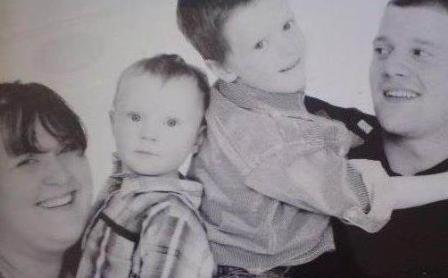
LAURA RICHARDS
Hi, my name is Laura and I live in Rhondda South Wales with my husband Lee and my 2 sons Jaydan (9) and Alex (6)
I found out I was pregnant at a young age and it was a shock. The pregnancy went well apart from the sickness for 9 months. Jaydan was born 5 days late on 30th May. I don’t remember much about the birth apart from it being quick and Lee saying Jaydan had a bad foot. I didn’t care I was so happy my baby was safe and healthy.
We were kept in hospital for 10 days in that time doctors would come in and examine Jaydan and walk back out.I will always remember the doctor that came in and told me that my son will never walk. I sat there and cried and thought who cares he’s my son!
If I am honest the 1st year of Jaydan life still reminds a blur as I suffered severe post natal depression. When I took Jaydan out in pram I remember some people would make comments ‘Look at that babies foot’. I don’t notice people staring anymore I just block them out, but Jaydan notices now. I would like people to ask!
Jaydan was 6 months when we had appointment at local hospital. At the time we were told nothing we can do just wait. The turning point was when my mother was at a family funeral (great aunty) it was there she noticed a picture of a child with enlarged digits it was then we got transferred to Great Ormand Street Hospital, London.
Jaydan was 7-8mths when he had his first operation. This was also a blur to me I can remember being scared and upset but extremely grateful of support from family and friends and to this day I can not thank people enough for support and help.
I think Jaydan is 10 in 2 weeks, its been hard at times. However I wouldn’t change him for anything this is who Jaydan is and I want him to be proud. He is brave, caring and helpful. I will always encourage him not to let his leg hold him back, but has his good and bad days.
People sometimes ask me how I cope. The reply is easy he is the same as any other child and you have to stay strong. I am slowly learning its ok to be scared and upset. In future there are a number of operations already planned and challenges ahead. However with love and support we will overcome them and stay strong together.
I want the same as any other parent my children to be happy.
Thanks for reading my story

JAYDAN RICHARDS
Hi, I’m Jaydan, I have a little brother called Alex.
I like Lego and Minecraft. I enjoy playing computer games on the Xbox and PlayStation. I am learning to play the guitar. I like spiders and I have 3 pet spiders that I look after. My favourite lesson is Art I love to design and create. I like Marvel and DC superheroes and enjoy watching films I love going to the cinema and eating popcorn.
Sometimes I feel worried that people say mean things to me. I get scared when I need to have operations. I sometimes feel that no one understands because they don’t have a bad leg and foot. I get annoyed when clothes don’t fit me because my leg is big I need to wear big clothes to fit my leg and always have to try clothes on. Also I need to have my shoes made and I get upset that I can wear the same as my friends.
When I grow up I would like to design computer games 🙂

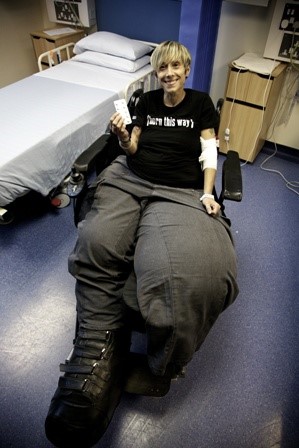
MANDY SELLARS
When I was born in 1975 it was clear that there was something wrong, my upper body was incredible thin but my legs and feet were 3 or 4 times larger than the average baby.
The doctors did not expect me to live beyond 2 weeks, yet I did and am still going strong after 40 years.
After various medical problems which led in 2010 to the amputation of my left leg my legs still continued to grow and my stump increased in size to 112cms in circumference at its largest and life was heading in one direction and that was to become bedridden one day.
I was lucky enough in 2011 to be put in touch with Dr Semple & Dr Parker at Addenbrokes in Cambridge. After a year or so of research the day came that I had never thought would happen in my lifetime, they had actually found what has caused my condition.
I was the first person in the world to be found with this particular single letter mutation in PIK3CA gene, something which I feel very proud to say. Following this and further research it was suggested that I try the drug Rapamycin, predominately used as an anti rejection drug for kidney transplant patients.
However, testing in the lab showed that it stopped the signal that told my affected area to grow from getting through to my faulty gene,suggesting that my overgrowth would stop and there may even be a possibility of the affected area shrinking.
After taking the drug now for 3 years or so I am happy to say that my legs and foot have shrunk to the extent that I have lost around 5 stone!
I am finding moving around so much easier now, of course it will never be easy and I am still fighting to regain my independence that value more than anything, apart from my health of course.
I know that one day I will achieve this and I will be able to go out on my own again.
In the meantime I keep busy with online studying and voluntary work in and outside of home with a little help from my amazing friends.
This drug is an amazing breakthrough and hopefully it is something that will help others in a similar position to myself to change their life, just like mine has been with the help of Dr Semple and Dr Parker.
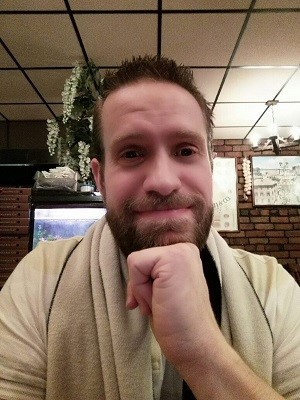
I’m James Vincent, 32 and I Live in a small village near Cardiff. So this is how I have been diagnosed with Proteus syndrome. Growing up with it. The physical & mental challenges. Other suggestions on what I have and finally PROS-Segmental overgrowth diagnosis.
At the age of 5, my parents took me to Great Ormond St: Hospital in London. We needed to find out why various parts of my body were overgrown. From birth it showed completely throughout, but mainly affecting my left leg with quite a big difference in those early years. Also, my right leg was shorter to the point I needed my one shoe built up.
I don’t remember that, but by the time I was maybe around 7 years old, the length had caught up with my left leg but the size of my right leg had stayed how it was. Unaffected by the overgrowth. Well, at least size wise anyway.
During those first five years we didn’t have anyone that we could go to askquestions.
We didn’t know anyone else with overgrowth. So my parents felt going to London was something we needed to do.
I don’t remember much of that week in Great Ormond street. Only that I hated it. I sat through many different tests and there were lots of other children also with different disorders. [I’m using ‘disorder’ as I don’t like the word ‘disease’ & ‘condition’ doesn’t seem right]
At the end of it all the best that the doctors could come up with was Proteus Syndrome. Leaving us with that, they just sent us on our way as there was no community to go to for support. So that’s what we settled with and that’s what my parents lived with. The uncertainty and not knowing of what could come
Proteus is a progressive disorder that grows out of control at a much faster pace than the unaffected parts of the body. It is mostly bone affected, but can be tissue too. This often results in the need for surgery multiple times, to keep cutting back the extreme overgrown parts which in the end my lead to amputation as the best option to save the patient of severe distress in the long run. Or something even worse.
At this point I should point out that this has impacted my mobility more than anything. With the distance I’m able to walk decreasing through the years, the last four years is where I’ve seen the biggest change. I’ve been silently preparing myself mentally for where I could be with this in 5 to 10 years’ time.
Also the pain that I’m living with in my right leg on a daily basis is much more. It leaves me wondering what options I’ll be left with in the future as painkillers are now almost un-affective.
Doctors insisted on monitoring me from a young age as they feared that this overgrowth could kill me before my teenage years, as proteus is known to be a killer. So there were many regular hospital visits each year for various things, which continued well into my teenage years. These were to check my internal organs like lungs, kidney and whatever else were not growing at a faster rate than what they should be.
The dreaded hearing tests became regular also as sometimes I can’t hear, but this is due to the tubes [the ones connecting Ear, nose, throat] as when breathing in and out, our tubes open and close but mine can’t always do that due to them being larger. But again that’s something many doctors didn’t understand and many still don’t.
We also had to monitor my varicose veins in both legs, size of my legs, what difficulties the physical side of things brought and how the overgrowth was progressing. The pain that they brought was generally forgotten about on these visits so was never really taken into much consideration by the doctors & consultants. So that’s what most of the visits consisted of. Mostly to the University Hospital of Wales [UHW].
What we did know is that the bigger parts, the leg, fingers, toes, ear etc… were growing steadily, at the same rate as the non-affected parts.
Which was showing this is not typical Proteus because it was not ‘progressive’. But again, no one could tell us anything else.
My facial features look fine and no one would notice anything different unless I point them out as they have smaller differences. Hands and fingers look different, but not by much. It’s what isn’t visible to people is where things change and the complexity of it all shows.
But as mum always said… I’m one of the lucky ones.
In one way I suppose I am. Though this didn’t stop it from feeling incredibly hard at times and isolating.
High school presented itself as the most challenging. Emotionally more than anything. With not being able to take part in most P.E activities, some teachers not understanding why I couldn’t run or join in a game of basketball, rounders or anything that required plenty of energy. I eventually stopped attempting to join in to do what I could in a game as there was only frustration and insults from other class members due to the risk of the other teams winning.
Looking different, not being able to walk far, finding stairs hard some days, seemed to be not good enough for the other teenagers. Because if teenagers don’t know or don’t understand then they throw judgement. Whether it be comments, looks, torment or even just sheer hate shown from the odd few. All this made me develop many insecurities that I’ve fought over the years, mostly on my physical looks.
Confidence, trust, showing my legs, talking about my overgrowth, taking up some new opportunities, things like that. I’ve managed to get on top of them, but sometimes I still feel them.
I did have support, patience and good times from a few classmates, my little circle of friends, but that didn’t take away the upset and most of all isolation. On top of my own personal life with things like hospital visits, daily difficulties, I had to deal with school.
Around the age of 19, mum and I were put in contact with the PSF, [Proteus Syndrome Foundation]. This is Tracey Whitewood-Neal’s charity. Tracey set this up as her son Jordan, has ‘typical’ progressive proteus. Tracey has been very supportive over the years to everyone who joins the charity and attends the family gatherings.
I met Dr Leslie Biesecker, a specialist in Proteus, from America at the first family meeting myself and mum attended in Kent. I was about 19/20. All I remember from those two days is that he took one look at me and said, ‘You don’t have proteus’. Part of me expected that, but it still left me feeling disappointed and confused. He told me I may have HHML – Hemi Hype Multiple Liptocious. Hemi meaning half. I can’t remember the breakdown of the rest. But it was getting closer, though this was still some sort of guess. We left it on doctors’ notes as Proteus as we didn’t want to cause confusion.
Since then I needed to find someone to give me a solid answer. That was my mission!
Two years later we attended the next family weekend. This was when Dr Biesecker threw ‘HHP – Hemi Hyper Plaisir’ at me. Basically the same thing. But more acronyms was just confusing.
The years went on, we attended the family weekends, but I still very much felt that I was on my own in this and the isolation remained.
Even though Tracey told us we have support from her anytime we wanted, we only spoke and saw each other and the other families at these meetings. With no social media to connect people back then, hardly many email addresses, just maybe a phone number. But what was I supposed to say if I did call someone?
As I was going through my 20s I battled with the physical appearance of my body the most and always feeling judged by it, to trust someone not to do that was not possible.
I needed to find my inner peace to become happy in my skin, but that I didn’t know how to do. Though comments and looks were sometimes passed my way, usually by kids or a few college students for a short time [college was generally rather enjoyable]. Some even by family members. I would hide my legs, never wearing shorts and not wanting to go anywhere hot for holiday. Always wearing a t-shirt as I have some patches of pink markings above my waist line. I felt like I should continue to hide myself away. Not seeing any point in talking to anyone about it as there wasn’t and still isn’t anyone who actually ‘really does’ understand. I just kept silent and didn’t mention anything to anyone.
After many years of debating and getting upset with myself, also feeling incredibly frustrated that other people were doing things I wanted to do, like swimming and going on holiday. I forced myself to change my attitude and turn my confidence issues around. I decided that if I wasn’t good enough for someone, then I didn’t need to know that person. I needed to surround myself with positive supportive people.
My peace with myself eventually came, I was 27. I can’t tell you how exactly, but I finally felt comfortable in my own skin. I learnt that this is me. I had to be happy in life and only I could make that choice. We ourselves choose if we are to be happy or sad. No one else.
Feeling happy that I found some sense of peace, I thought life could be easier for me. But there was something else showing more by my
mid-20s. I just chose to ignore it.
My varicose veins were putting more pressure on the surface of my legs.
The pain was sharper and more often. Walking was much more of a challenge. I knew what I should have done when I was 18, but as a teenager who wanted to be the kid that fitted in with the others without limitations, I was stubborn.
At the age of 26 I gave in and was referred to a department in the NHS that makes knee high length compression socks. Even though they are extremely tight, they are designed to ease pressure on the legs and keep one standing a while longer.
They have helped greatly and we have also seen a reduction in the amount of fluid in my legs. Without these my left leg would be much worse off and my right just wouldn’t be capable of anything.
This is my sixth year with them now, having new ones every six months.
But I still hate them. They aren’t designed for comfort but do need some sort of comfort fitting to sit right, if they don’t sit or fit correctly then they can cut into me which is very unpleasant. When I first got them I took it for granted that they would solve the pain issues I had. But they weren’t designed for that.
I’m still not comfortable within myself having them but I’m not going to let that get on top of me.
I’m forcing myself just to get on with it and know that these are my aids for walking. They do the same job as crutches, walking frame and a false leg.
Upon receiving my first pair, it did set my confidence backwards but I knew I had to push on. Although on becoming happier within myself, I was self-conscious of these compression socks and kept it to myself for a while. I’ve eventually developed the courage to say what they are If anyone asks why. I’ve just got to show some confidence and make them understand.
As I was heading to my 30s I was still so desperate to know what am I really living with. Over the years, watching various documentaries with Jordan, Mandy and other people with different types of overgrowth. Part of me wished I could be the one someone was spending time and money on. Then came February 2013. I had no idea things were going to change. Mandy Sellars’ Shrinking my 17 Stone legs aired on TV. I always find it hard to watch these documentaries. So when possible I tend to watch them on my own. I finally watched it one Saturday night the following month in March.
I reached out to Mandy the following day on Twitter. We exchanged a few messages. I happened to mention that Proteus/HHP was guess work and I didn’t know what else to do. Mandy asked for my email address to give it to Victoria Parker at Addenbrooke’s Hospital, part of The University Hospital of Cambridge. I said yes. Thinking will anything actually come of this? The next morning I had an email from Victoria, introducing herself and explaining a little about what the team at Addenbrooke’s is all about and to arrange a phone call.
The next day on the Tuesday, we had that phone call. I explained the basics and talked in more detail about what is done there. NHS England invests money into research for people with rare disorders and work with other charities around Britain with similar goals. A week or two later I had a date for the 1st May to spend one night, two days there.
All this happened so fast before I realise that I had opened myself up to more tests. The thought of Great Ormond Street came back to me. But I quickly pushed that aside as I knew I had the reassurance that if there was any test I did not want to take part in I did not have to. But I’m the type of person that if I say I’ll do it and I’m there, I’ll have to because if I don’t, I’ll regret it all the way home. During my first visit the team made me feel welcome and looked after me really well. There were of course the blood tests but they quickly learnt not to show me the tools! There was a glucose test. Down a pint of Lucozade then monitor my blood to see how I react to a quick intake. All fine there of course. I had a tissue sample taken for ‘growing’ in the lab. This was to see if they could find the cause of my overgrowth and get some solid answers.
This was going to take quite a few months, so I knew I had to be patient. There was a DXA scan. Think of that as being scanned and printed. My skeleton, body fat, tissue, muscle. All laid out nicely on paper and colour coded. That brought the first discovery. Not only did it show that I had overgrown tissue in my legs, mostly on the left leg. But it was the fact that it showed me that my skeleton was not affected by the overgrowth. This was something which no one knew. My overgrowth has created much more tissue throughout my body.
After that I was left for a while in my room. I needed some quiet time as I found that I just cried for a while. I was here the other side of Britain with this new challenge and adventure. I was finally getting answers to the questions I’ve been so desperate to ask for so long. Though some part of me didn’t want to do this, after this discovery that changed. I dried my eyes, put on that smile and continued with business. There were a few other tests during my time there like the MRI scan [really didn’t realise how noisy those things are]. But the biggest and hardest one was saved till last.
As it’s a University hospital, just like my main one home here in Wales, there are students. I was asked if I could help them learn from me and I always do like to say yes, though face and identity would not be revealed. It was all explained to me and I was all set to go. I remember being in that waiting room with Victoria and one of the nurses. I think they could see that my nerves were on the ceiling. Myself and Victoria went into the photography room. Even though Victoria could probably see at this point I was extremely hesitant, I knew I had to do this. I was helping people study overgrowth and learn from me. After all, they were helping me. I took off my clothes with just my boxers remaining on and the photographer took pictures of different parts of me. This would give the students a look at my type of overgrowth. Feeling exposed and a little raw about how I was feeling I knew I had done good.
After returning home it took me a few days to come down from feeling poked and cut open! During my second visit later that year, they needed another tissue sample. The first one didn’t have much of an affected area. Then the news eventually came…
I had a phone call later in 2013, towards the end of the year. Victoria called me with some good news. Well, sort of. ‘James you don’t have proteus syndrome’. She said This time I knew it was real. But I waited for Victoria to say ‘but you do have this…’ That didn’t come. More time was needed. It was quite some months that I felt I was just hanging. But I knew Victoria’s team were doing what they could. During that wait I had another visit, I was given all the details and kept up to date every step of the way. It didn’t take away some worry of what they could find.
I found it was a horrible feeling. This was something I had been waiting for and trying to prepare myself. But now it’s here, I didn’t know how to feel. I stuck to Proteus when talking about it to nurses and doctors as I didn’t want to say something I couldn’t give details on and was worried that an answer might not actually come. For someone who’s always had a strong sense of faith in everything, I realised that I’d lost it here.
August 2014 finally came and Victoria called me to give me the details of what I really do have PIK3CA. It is the gene change in the 81st Amino Acid in the protein [E81K] in around 20% of my leg and back. [Seems more than 20% to me but can’t dispute science!] But it’s not in my blood. Oh and it’s not inherited from the parents either.
I’m the second to be found in the UK with this gene change. [Mandy’s the first] Those are the basics of the explanation.
The easiest way to put it is Segmental Overgrowth. Meaning no pattern to it, just randomness.
So, finally. It took 31 years to find out what has caused my overgrowth. It is still just a bunch of acronyms, but there’s some explanation to it.
Myself and Mandy have the same gene change but are also very different. My change happened late in my developing stage, where Mandy’s gene changed right at the start of her development of life.
Although the feeling of isolation has always been with me, I have had some good talks with Mandy. She’s given me a smile after every conversation. I know she does understand how I feel and on some level, I too know how she may feel at times. I can’t describe how I feel through all this, with what the team at Addenbrooke’s has done for me. All I can say is I’m grateful. They sit and listen to me. They work hard. They made me feel important. One more challenge lies ahead. Do I take part in the drugs trial to shrink my overgrown leg? I know it may change all overgrown parts too.
Will it work? What will happen if I stop taking the drugs? Will the changes remain when I stop?
So many questions. If I do it’ll be the biggest leap of faith ever. I pray every day that I find the courage to take part.
So much to learn in 2016…
As I end this I’d like to say all is not lost. I am feeling a lot happier and comfortable in myself. I’ve taken up swimming and I wear those shorts on holiday. There is support out there. Myself and Mandy have recently joined a new group set up by NHS England for Rare Diseases – Translational Research Collaboration, National Institute for Health Research.
Building a community where we can support each other.
Amelia
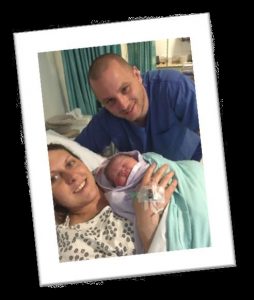
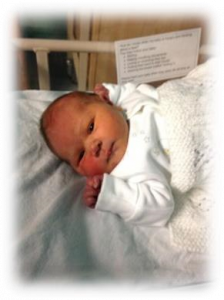
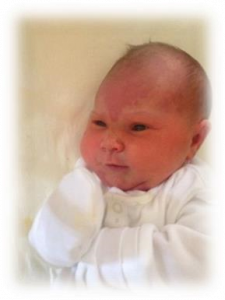
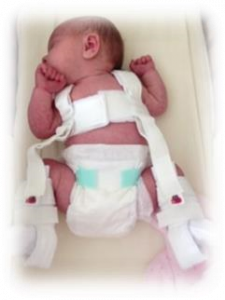

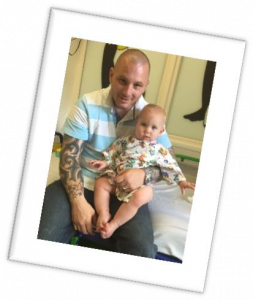
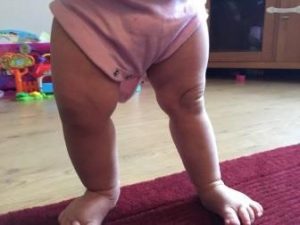
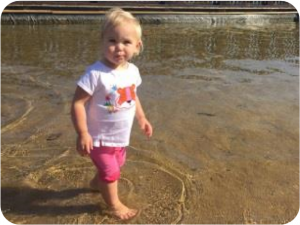
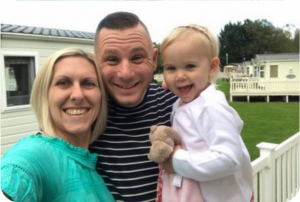
My Story so far…
My name is Amelia; I live in Gloucestershire with my Mummy and Daddy. I was born in July 2015 at Gloucester Royal Hospital. I was born with a few minor medical complaints but generally a healthy baby. Within a few hours of being born it became apparent I had noticeable birth marks across my body and a large purple mark across my forehead. Along with this my right cheek was bruised and swollen which the doctors believed was due to the emergency forceps delivery. I spent 3 days in hospital with my mummy and met many different consultants who were very interested in my birth mark as many of them had not seen this before… I was quite unique.
Before being discharged from hospital the consultants discovered I had hip dysplasia and would need a harness to strength and support my hip in the early stages of growth (picture of me in my harness which I wore between 6 weeks and 4 months)
As the months went on it became noticeable that my facial swelling was not going down and I was referred to a specialist to complete an ultrasound. At this appointment it was also noticed that my right leg and arm was also larger than my left. After many tests and appointments at Gloucester Royal Hospital we were referred to a specialist at Great Ormond Street Hospital who suspected an Overgrowth Condition which was affecting the right side of my body. Between 8-9 months old I experienced two absent seizures and spent a night in hospital where I had an ECG and EIG to find out what was causing them but nothing was found.
A week after my first birthday I attended GOSH to have a skin biopsy and MRI scan, which tested positive for PIK3CA gene mutation.
As many of you will know this condition varies from person to person and in my case it’s causing my right leg to grow at a faster rate than the left making it wider and longer in length. I am being referred to orthotics to get measured for my shoes which will help with the discrepancy in length and size, which will stop me tripping or dragging my leg behind.
The MRI scan picked up the slightly larger size to the right side of my brain, it doesn’t seem to affect my development in fact, Mummy and Daddy think this is why I’m too clever for my own good!
My face is noticeably larger on the right and affects my cheek, lip and eye shape but neither of these appear to be affecting my day to day at the moment.
So it’s October 2017 and today I collected my orthotic shoes. I was very excited as I chose these at my last appointment. I have had them on all day and seem to be walking better. I go back in 3 months for a check-up and to choose a second pair.


